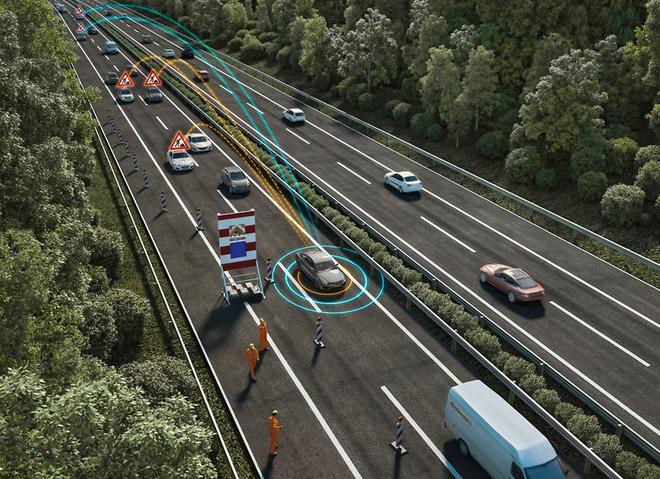
Continental develops global 5G-hybrid-V2X solution
Continental is developing a flexible 5G hybrid platform that allows both mobile network communication, and rapid and reliable direct exchange of data, with a first customer already signed up.
Connected vehicles allow drivers and passengers access to state-of-the-art infotainment. They also have the potential to communicate real-time traffic updates and road hazards, and future safety assist functions by communicating directly with other vehicles or the infrastructure, making driving safer and more efficient.
To achieve this, Continental’s Hybrid V2X solution integrates technologies not only for 4G and 5G network access, but also Dedicated Short Range Communication (DSRC) and Cellular-V2X for direct V2X communication.
This enables vehicle manufacturers to overcome a big challenge when deploying V2X on a global scale. Contrary to regular mobile network communication, the technical path to establish direct V2X communication varies globally.
Some regions prefer the established DSRC and others lean toward the upcoming Cellular-V2X standard. With Continental’s new hybrid V2X solution, the same hardware and software platform can be used to support either communication standard, reducing not only cost but also complexity for a global application of V2X communication.
“Winning a first project based on our 5G-Hybrid-V2X platform is not only great news for us but for the entire industry'” said Johann Hiebl, head of the business units Body & Security and Infotainment & Connectivity at Continental.
“Bringing 5G on the development roadmap so early demonstrates that the automotive industry has its finger on the pulse of digitisation.
“Additionally, deploying V2X on such a large, global scale marks an important stepping stone for safer and more intelligent mobility.”
Combining V2X with mobile communication results in a platform for any type of networking. During the development phase on the hybrid communication platform, all V2X requirements for the security stack, positioning and application framework were integrated with the 4G/5G counterparts.
“Ad-hoc networking through V2X has the potential to drastically increase driving safety. Direct information from other vehicles can improve the decision-making of drivers and automated driving functions,” said Dr. Bernhard Klumpp, head of the Passive Safety and Sensorics business unit at Continental.
“To fulfill this task, V2X technology must be as fast and reliable as possible – and it must be available globally. To date, short-range communication and long-range communication are two different systems with dedicated Electronic Control Units (ECUs). Networking both types of communication more closely will bring safety benefits,” he added.
